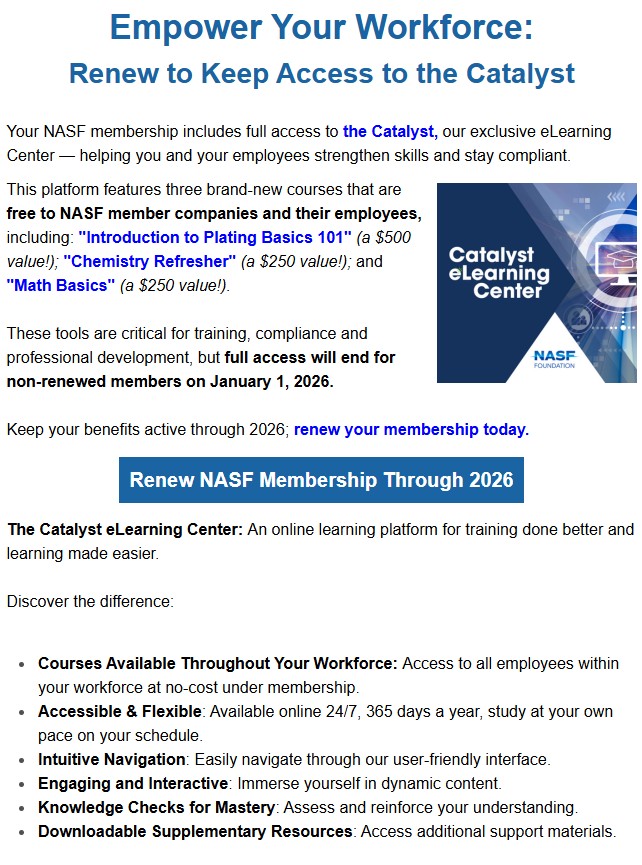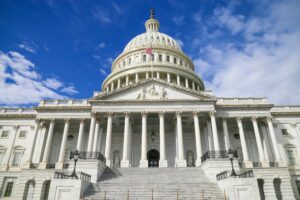A Strategic, Multi-Channel Approach to Membership Marketing
For most trade associations, the final quarter of the year brings two things into sharp focus: next year’s programming and membership renewals.
Unlike professional societies, where membership resides with individuals, trade associations have a fundamentally different challenge. Their members are companies, and the decision to renew (or not) often depends on broader business priorities, internal budget cycles, turnover among decision-makers and the association’s ability to clearly demonstrate enterprise-wide value.
In other words: membership marketing for trade associations is not just “professional association marketing, but bigger;” it requires a specialized strategy, tailored messaging and deliberate sequencing across multiple channels.
As many organizations enter the 2026 renewal season, here’s a comprehensive look at what successful trade association membership marketing entails and how to build the structure, momentum and urgency that drive renewal conversions.
Trade vs. Professional Associations: Why Membership Marketing Requires a Different Lens
One of the most common misconceptions is that membership renewal tactics are interchangeable across association types. They are not.
Professional associations speak directly to individuals, often those seeking credentials, networking or career growth. Trade associations, on the other hand, serve entire companies, usually through one or two primary contacts who act as decision-makers or internal champions. These individuals aren’t just renewing for themselves; they’re renewing on behalf of every employee at the company who benefits from the association’s programs, thought leadership, events and advocacy.
This structure introduces unique marketing dynamics:
- Messaging must be business-focused, emphasizing ROI, industry influence and the value their whole organization receives.
- Touchpoints must reflect internal decision hierarchies; marketing often begins with one contact but later expands to reach multiple people across the company.
- Renewal engagement must anticipate internal routing delays, leadership approvals and fiscal-year constraints.
Understanding this distinction allows trade associations to craft renewal strategies that align with company-level behavior, not individual behavior.
Why a Renewal Strategy and Timeline Matter
Trade associations see the strongest renewal results when they enter the season with a clear, sequenced plan. This plan should answer:
- How will we reach members?
Email alone is rarely enough. Social media, targeted advertising and direct mail all play important roles. - When should messaging begin?
We typically recommend starting 90 days before the new membership year, but potentially even earlier if your members follow long internal budgeting cycles. - How do renewals align with other marketing priorities?
Renewal messaging can and should be integrated with campaigns for events, educational programs or new benefits. This helps reinforce value without overwhelming members with disconnected communications.
A strategic plan prevents a last-minute scramble, avoids over- or under-communicating, and ensures that messaging hits at the right moments throughout the year.
Leveraging Incentives and Seasonal Momentum
Many trade associations hesitate to offer financial incentives, but even small, time-bound offers can drive conversions, especially in crowded inboxes.
Key seasonal moments include:
- Black Friday
- Cyber Monday
- Year-End Holidays
- New Year Budget Reset
A short-term 5–10% dues discount, a complimentary event webinar or registration for next-year event, or an early-renewal bonus can cut through the noise and prompt action. Even if your association cannot alter dues structures, you may be able to offer a non-financial incentive such as priority event access or a benefit add-on.
The key is urgency: “Renew this week only at a discount” works because members already expect limited-time opportunities around these dates.
Understanding Membership Policies to Shape Messaging
Effective renewal marketing is grounded in transparency and alignment among all relevant departments. Before you launch a campaign, confirm:
- What is the deadline for renewal?
- Is there a grace period, and how long is it?
- When will members be dropped?
- What happens when they lapse?
These operational details shape the tone and urgency of your marketing. Your goal is to communicate renewal needs clearly — without ambiguity, surprises or the dreaded “I didn’t know” response from a member company.
A Standard Trade Association Membership Renewal Playbook
While every association’s membership model and business cycle differ, at Kellen, we follow a consistent and effective renewal cadence many for our large trade associations:
Three Months Before the New Year
- A transactional invoice or dues reminder through the (Association Management System) AMS.
- A broad social media announcement that the renewal period has started.
- Launch of a four- to six-part automated email series from your email platform, not the AMS, to all primary (and sometimes secondary) company contacts.
These emails are not transactional and generally do not include pricing. Instead, they:
- Clearly articulate core benefits.
- Remind members what they would lose by lapsing.
- Reinforce that all employees of a member company receive benefits: An important but often overlooked selling point.
The series typically includes:
- Email 1: General renewal information and annual value recap.
- Email 2–3: Deep dives into specific benefits (advocacy wins, education access, cost savings, industry benchmarking, etc.).
- Email 4: A personalized letter-style message from the association’s CEO, Board Chair or President, which is an approach that typically leads to higher email open and click-through rates.
Over the Following Months
- Continued drip email reminders.
- Additional social posts.
- Increasingly timely transactional prompts from the AMS.
- Integration of renewal CTAs into event marketing, education promotion or year-end campaigns.
Holiday Season
- Strategic use of seasonal momentum and short-term incentives (e.g., a brief dues discount during Cyber Week).
Entering the Grace Period (January–February)
If companies still have not renewed:
- Expand email communications to ALL contacts at the member company, not just the primary contact, to increase penetration and awareness.
- Deploy LinkedIn digital advertising targeting C-suite, HR and finance professionals at non-renewed companies.
- Consider direct mail: A simple but often overlooked tool that frequently breaks through when digital reminders are missed.
At this stage, the message should be clear: “Your membership has lapsed, or will soon. Renew now to avoid disruption.”
Case Study: How NASF Rebuilt Its Renewal Cycle Through Early Planning and Multi-Channel Outreach
Background
The National Association for Surface Finishing (NASF), part of Kellen’s industrial and manufacturing portfolio, has long experienced delayed membership renewals, often stretching well into the new year. This created uncertainty for planning, revenue forecasting and staff workload.
The Challenge
Many NASF member companies operate in environments where employees may not use email regularly, and digital engagement varies widely. Relying primarily on email meant many messages didn’t reach the right people, and renewal decisions were slow to move internally.
The Strategy
To reset the cycle for 2026, Membership and Marketing began planning in summer and mapped a clearer, earlier, multi-step strategy. Key components included:
- Launching renewal messaging earlier than ever before.
- Deploying a structured, benefits-focused email series.
- Incorporating direct mail, SMS, phone calls and ringless voicemail to reach non-digital audiences.
- Reinforcing messaging with social content and targeted LinkedIn ads.
- Meeting weekly to review performance and refine tactics in real time.



Implementation & Results
The campaign kicked off three months before year-end and used varied touchpoints to ensure broad reach across operational, finance, HR and leadership contacts. Early indicators have been strong:
- Member companies are responding sooner and more consistently than in past years.
- Email engagement is unusually high, with click rates around 50%.
- Supplemental channels — direct mail, SMS and phone outreach — are helping reach employees who don’t rely on email.
- The campaign is keeping NASF on track for a cleaner, more predictable renewal cycle and healthier early-year cash flow
Key Takeaways
Membership renewal success isn’t accidental; it’s the product of thoughtful planning, layered messaging and a deep understanding of the company-level buying behavior that defines trade associations. Start early, stay strategic and diversify your channels. And remember: Renewal season is also a powerful opportunity to reinforce your value, deepen relationships and strengthen long-term retention.
For additional insights on how to design and implement successful awareness campaigns that drive engagement and membership growth, we invite you to reach out to Kellen or contact Adam Robertson, Director of Marketing, at arobertson@kellencompany.com


